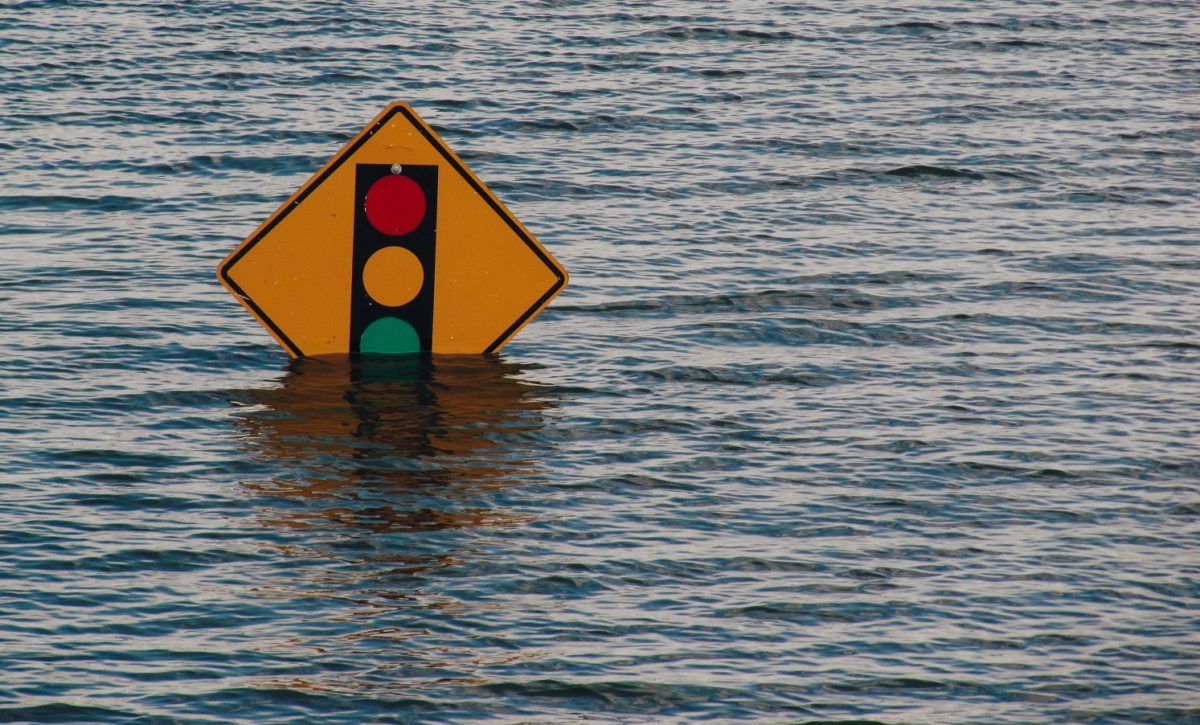Risk Perception Floods the Risk Communication Scene
Posted on May 17, 2021
by Rachel Krueger

Posted on May 17, 2021
by Rachel Krueger
Here’s something you probably know from experience: your perceived risk of a threat can be very different from the actual risk of that threat. That we would sooner set foot in a car than a body of water home to the occasional shark is a case-in-point of our fundamentally flawed sense of risk perception.
Our faulty risk compasses by themselves aren’t the problem—risk perception is a pretty handy natural defense mechanism. What actually matters is the situations we analyze for risk, and how we respond in turn.
It’s impossible to constantly take stock of the complex risk environment associated with simply existing in the world. We’d only cause ourselves undue stress to fret over risks we can’t control; even experts can’t be expected to be completely prepared for catastrophic events like tsunamis and major oil spills.

It’s most pragmatic to concern ourselves with low-impact, high probability threats. These mundane threats are often eclipsed, however, by their high- impact, low probability counterparts. Think about the everyday wear-and-tear of exercise on your body—there’s a high probability of soreness or pulling a muscle, but the threat to our life is low. Still, the threat of a shark attack is more exciting to our brains than the risk of pulling a hamstring. Our risk compasses have a tendency to confuse north with south.
Water, Water Everywhere, and Not a Hint of Risk
In Canada, flooding is an example of a persistent, relatively low-level threat that most people don’t typically consider risky enough to merit preparation. In a 2020 survey by the applied flood risk research group Partners for Action, nearly half of the 2,500 Canadian homeowners living in a designated flood zone said that they were unconcerned about flooding, and just over half had not taken action to protect their property from flooding. Subsidized sump pump, anyone?
No matter what our risk perception may tell us, floods are actually the most common natural disaster in Canada. The Canadian Disaster Database reported 91 significant floods in the last two decades, which is close to half the total number of flood events that occurred in Canada in the entirety of the 20th century.
Along with the increased frequency of flooding is the cost to property-owners, insurers, and all levels of government. Flooding is largely to blame for the property and casualty insurance industry’s mounting catastrophic insurable losses each year. Catastrophic losses represent insured losses for a disaster that total $25 million or more, and they’ve risen steadily since the 1980s. In light of the financial burden of ever-more frequent and intense floods—including the devastating Alberta floods of 2013—the Harper government began to usher in an integrated approach to flood management to try to disperse the risks (and costs) among everyone involved in flood management. Historically, the onus of flood management rested almost exclusively on federal governments, who relied on physical control measures (think, dikes and dams) to manage floods. The new, risk-based approach relies less on structures and more on collaboration.
This means that federal disaster aid programmes have been winding down, and at the same time, the availability of private flood insurance and property-level flood protection measures, like residential flood risk assessment training courses and free how-to guides, have increased. Canadian homeowners and renters have become responsible for their own home flood protection and flood response in an unprecedented way.
Flooding is a chronic hazard that many Canadian homeowners and renters pay for dearly—financially, physically, and emotionally—but residents aren’t acting on reducing their personal flood risk. It’s tempting to say that the solution to galvanizing action among the public is to spread information about flood risk widely, and then, armed with this knowledge, people might adopt risk-averse behaviours.
But maybe that’s naïve. To the exasperation of emergency managers and public officials everywhere, people can be told about all the dangers of a risk and still neglect to change their behaviour. It turns out that flood risk awareness is just one of the catalysts for acting on the very real risk flooding presents. Knowledge, access to resources, and risk perception all play a role in determining our flood-related actions (or lack thereof).
What Lies Between Perception and Action?
Risk perception is undoubtedly the most nebulous piece of the risk judgement-to-action puzzle. Even though we know a bit about what determines flood risk perception—income, gender, age, and previous flood experience, to name a few—the problem lies in the gap between how people perceive their own personal flood risk, and the actual risk of flooding in their area. Closing the risk perception gap is difficult because, well, people are irrational.
According to psychology and behavioural economics professor Dr. Dan Ariely, humans are unequivocally irrational. Nevertheless, there is method to our madness.
“Why do we splurge on a lavish meal but cut coupons to save twenty-five cents on a can of soup?” muses Ariely in his 2008 book, Predictably Irrational: The Hidden Forces That Shape Our Decisions. “We consistently overpay, underestimate, and procrastinate. Yet these misguided behaviors are neither random nor senseless. They’re systematic and predictable—making us predictably irrational.”
People’s “predictable irrationality” has long been exploited for commercial purposes by advertisement companies, who are eerily good at preying upon consumers’ unconscious wants and desires. Beyond their commercial uses, our predictable patterns of behaviour can be used to more compassionate ends, such as motivating healthy behaviours through public health messaging.
A common behavioural intervention is reinforcement, which, for health risks, include ‘punishments’ that take the form of graphic warning labels on cigarette packaging to discourage smoking, or being denied entry into a public space without a face mask to reduce the spread of COVID-19. A positive reinforcement might be to ‘nudge’ consumers into healthy behaviours by placing healthy foods at the front of a store and unhealthy ones near the back.
So far, the evidence has shown that the science behind health risk interventions may be key in addressing how people perceive natural hazards, including floods. Protection motivation theory (PMT), a behavioural theory that explains how individuals make decisions about threats, actually has its origins in the field of health science.
More recently, PMT has been shown to accurately account for the risk perception mechanisms—like the role of income in determining flood risk perception and the likelihood of adopting flood risk-averse behaviours—of flood-prone homeowners in France, Germany and the United States.
Flood Risk Communication Awash in Behavioural Science
Theories like PMT help to explain the seemingly inexplicable differences in flood risk perception levels among specific demographic groups—for instance, the higher levels of flood risk perception among female-identifying homeowners and tenants shown in some research.
This is important: identifying gaps in risk perception based on social, economic and spatial factors could help to make flood risk communication to the public more consistent and targeted. In other words, the messaging around flood risk should resonate with the lived reality of the people experiencing the risk, otherwise, who cares?
There’s a compelling case for including risk perception in the design of educational initiatives and awareness campaigns. With advancements in flood risk research, we can adjust our methods of public engagement to promote flood-safe behaviours using the same science that backs tried and true methods to motivate behaviour change.
Imagining a Canadian society with accessible, effective messaging about flood risk looks something like this: flood risk information gracing the walls of public transportation stations everywhere, geo-targeted flood forecasting and warnings on social media, and dedicated home flood protection departments at essential businesses.

Photo by Berkay Gumustekin on Unsplash
Communication efforts must be taken on by diverse groups of flood risk stakeholders. Academia, insurance companies, community groups, financial institutions and local politicians all have an important opportunity to engage with members of the public about flood risk. Canada is in the midst of a transition in flood management that calls on everyone to do their part. This requires widespread behaviour change by individuals—but first, we need to understand how and why people make decisions. Identifying risk perception strategies for changing behaviour might help do just that.
This article was prepared for CatIQ by Rachel Krueger, School of Environment, Enterprise and Development, University of Waterloo.


